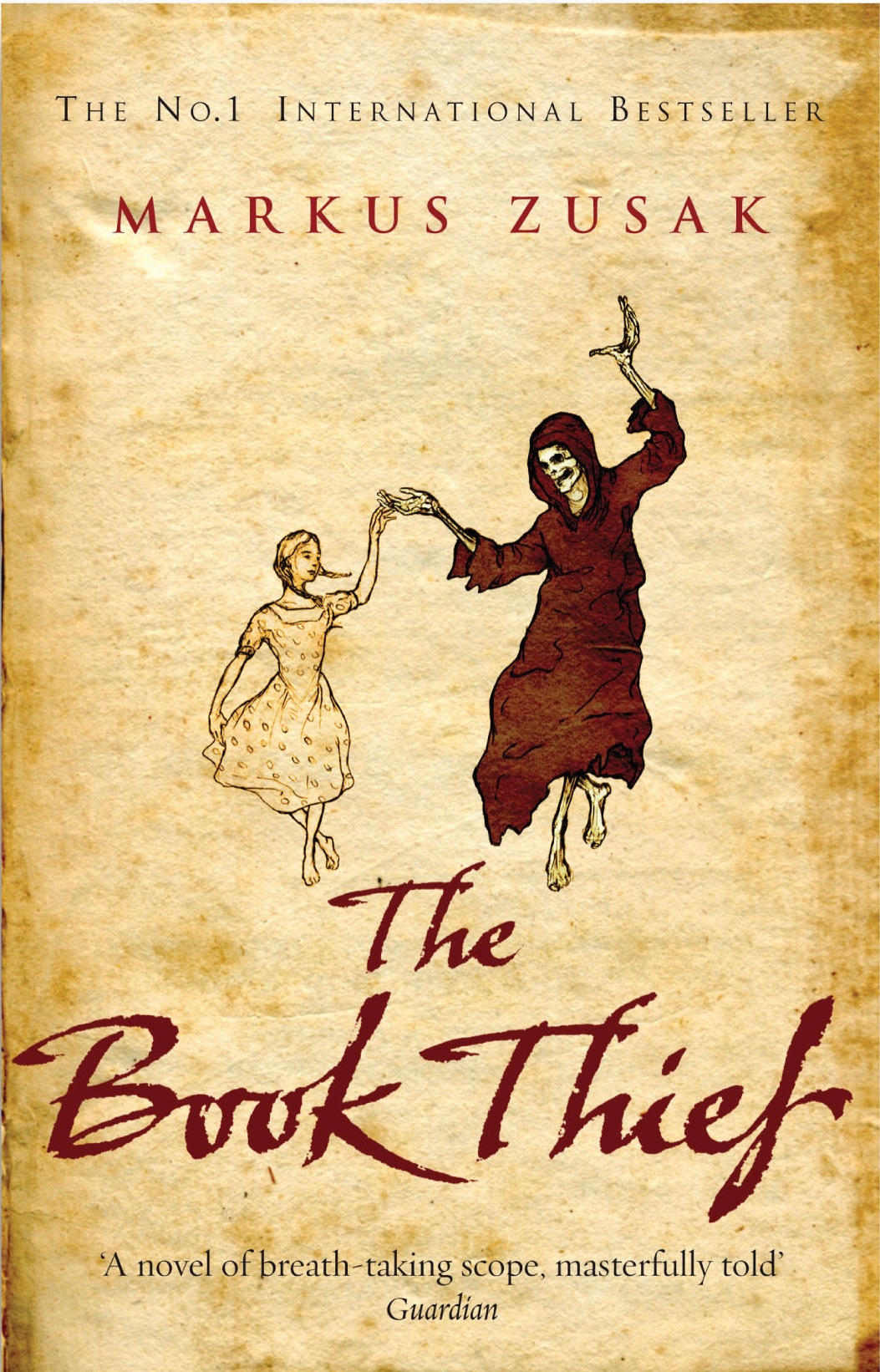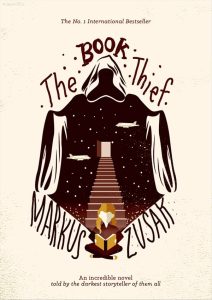- 19 December 2023
- 595
Pages Stolen in Silence: Markus Zusak’s The Book Thief Explored

Pages Stolen in Silence: Markus Zusak’s The Book Thief Explored
Introduction
In the realm of literature, certain narratives possess a unique ability to steal into the recesses of our minds, leaving an indelible mark. Emily Turner, our guide on this literary odyssey, is no stranger to the beauty of silent narratives. As an aficionado of subtle storytelling, Emily unveils the silent symphony within Markus Zusak’s masterpiece, “The Book Thief.” Join her on a journey that caters to the tastes of quiet contemplative readers, literature enthusiasts, and book club members hungry for engaging discussions.
The Art of Silence: Delving into Subtle Narratives
In the world of Markus Zusak, silence is not an absence of sound but a canvas painted with whispered emotions. The art of silence, as presented in “The Book Thief,” goes beyond the conventional; it is a narrative tool that speaks volumes. Emily explores how Zusak’s meticulous crafting of silence elevates the novel, making each unspoken word resonate in the reader’s mind.
Why Silence Speaks Louder Silence in literature is a tool often underestimated, yet in “The Book Thief,” it becomes a character of its own. Emily delves into how the silence within the novel speaks louder than words, creating a powerful undercurrent that tugs at the reader’s emotions. Zusak’s ability to let silence scream on the pages is a testament to his mastery of the craft.
Markus Zusak: A Literary Craftsman
To understand the silence within “The Book Thief,” one must first appreciate the literary craftsmanship of Markus Zusak. Emily unravels the mind behind the novel, exploring Zusak’s unique narrative voice and the literary techniques that make his work stand out in the literary landscape.

Unraveling the Mind Behind The Book Thief Markus Zusak, an Australian author of German and Austrian descent, weaves intricate tales that resonate across borders. Emily sheds light on Zusak’s background, highlighting how his personal history influences the nuances of “The Book Thief.” Through careful exploration, readers gain insight into the author’s intentions, making the silent symphony within the novel even more poignant.
The Power of Zusak’s Unique Narrative Voice Zusak’s narrative voice is akin to a melody, and Emily invites readers to attune their literary senses to its unique cadence. Exploring how Zusak employs distinctive techniques, such as the unconventional narrator—Death itself—and the strategic use of typography, Emily unveils the magic that lies in the author’s words.
Characters: Whispers of Depth
In a novel where silence plays a pivotal role, characters become the carriers of unspoken emotions. Liesel Meminger and Hans Hubermann, two central figures in “The Book Thief,” are not just characters; they are whispers of depth that echo through the narrative.
Liesel Meminger: A Silence That Roars Liesel Meminger, the book thief herself, is more than a protagonist; she is a testament to the resilience of the human spirit. Emily explores Liesel’s journey, dissecting the silent roars of courage and love that reverberate through her character. In the quiet moments, Liesel’s strength becomes evident, capturing the hearts of readers who appreciate the beauty of unspoken bravery.
Hans Hubermann: The Echoes of Kindness As Liesel’s foster father, Hans Hubermann embodies kindness in a world overshadowed by darkness. Emily delves into Hans’ character, unraveling the layers of silent compassion that define him. In a novel where every act of kindness is a beacon, Hans stands as a testament to the enduring power of quiet goodness.
The Setting: Silence in Nazi Germany
“Silence in Nazi Germany” might seem like an oxymoron, but Zusak’s portrayal of this historical backdrop adds a layer of complexity to the novel. Emily explores how the author masterfully integrates the silence amidst the chaos of Nazi Germany, making it an integral part of the narrative.
Exploring Silence Amidst Chaos Nazi Germany, a tumultuous period in history, becomes the canvas upon which Zusak paints the silence in his novel. Emily discusses how the juxtaposition of the quiet moments against the cacophony of war creates a poignant contrast, highlighting the profound impact of silence in the face of adversity.
How Zusak’s World Echoes in Silence Zusak’s meticulous research and attention to historical detail are evident in every page. Emily draws attention to how the silence within “The Book Thief” is not just a literary device but a reflection of the collective silence of a nation during a dark chapter in history. The echoes of this silence resonate with readers, urging them to contemplate the weight of unspoken truths.
Symbolism in Silence
In Zusak’s world, silence is not merely a void but a rich tapestry woven with symbolism. Emily unravels the layers of meaning behind the silent elements in the novel, shedding light on how each symbol contributes to the overall narrative.
The Power of Words: Silence as a Canvas In a story where words are both a weapon and a shield, Emily explores how silence serves as a canvas upon which the power of words is painted. From the stolen books to the whispered secrets, silence becomes the backdrop against which the impact of language is magnified, creating a nuanced interplay that captivates readers.
Death’s Whisper: Navigating Existence in Silence Death, the narrator of “The Book Thief,” provides a unique perspective on silence. Emily delves into the symbolism of Death’s narrative, discussing how the omnipresent character adds an existential layer to the novel. As Death whispers the stories of Liesel and her companions, the silence between breaths becomes a poignant reminder of the fragility of life.
Impact on Readers: Silence That Resonates
As readers embark on this literary journey, Emily examines the ways in which the silence in “The Book Thief” leaves a lasting impression. From quiet contemplation to vibrant discussions in book clubs, the novel’s impact extends far beyond its pages.
Quiet Contemplation vs. Loud Impact Silence, by its nature, invites contemplation. Emily encourages readers to savor the quiet moments within the novel, allowing the unspoken emotions to resonate within. In the stillness, the impact of Zusak’s storytelling unfolds, leaving an imprint on the reader’s soul that reverberates long after the book is closed.
The Book Thief in Book Clubs: Provoking Discussions For book club enthusiasts seeking rich discussions, “The Book Thief” offers a treasure trove of themes and nuances. Emily explores how the novel becomes a catalyst for meaningful conversations, with the silence acting as a fulcrum around which discussions on love, loss, and the enduring impact of words revolve. Book clubs, she argues, find in “The Book Thief” not just a story but a source of inspiration for profound conversations.
Comparative Table: Key Elements in The Book Thief
To provide a visual aid for readers, Emily presents a comparative table summarizing key elements in “The Book Thief.” This visual guide serves as a quick reference, enhancing the understanding of themes, characters, and symbolism within the novel.
| Aspect | Description |
|---|---|
| Themes | Love, loss, courage, and the enduring impact of words. |
| Characters | Liesel Meminger, Hans Hubermann, Rosa Hubermann, and Death as the narrator. |
| Symbolism | Books, accordion, and the color red as symbolic elements. |
| Writing Style | Narration by Death, use of bold font for emphasis, and unique chapter structures. |
Conclusion
As we reach the final chapters of this exploration, Emily extends an invitation to readers: explore the silence, embrace the whispers, and let Markus Zusak’s masterpiece resonate in the quiet corners of your mind. “The Book Thief” is not merely a story; it’s a symphony of silence waiting to be heard. In the echoes of Liesel’s stolen words and Hans’ comforting accordion, find a melody that lingers, a melody that will continue to steal hearts in silence for generations to come.
Note to Readers
To embark on this literary journey is to embrace the quiet power of storytelling. Let “The Book Thief” guide you through its silent symphony, and in the hushed moments, discover the profound beauty that lies within Markus Zusak’s artistry. May the stolen words and whispered tales linger in your thoughts, creating a lasting resonance that transcends the boundaries of time and silence.

